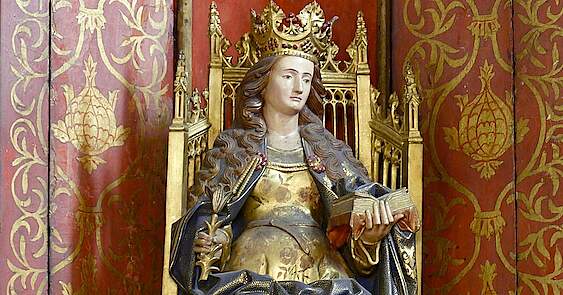
When the Virgin Mary was almost at the end of her pregnancy, the emperor Augustus ordered a great census, which required everyone to report to their city of origin. So Joseph and Mary went to Bethlehem, the birthplace of Joseph's family (cf. Luke 2:1-7).
If Mary had not been pregnant, after traveling the hundred miles from Nazareth to Bethlehem, the couple could certainly have stayed in the common room, like everyone else. They were not rejected because they were outcasts, penniless, or foreigners, but because Mary was about to give birth and there was simply no suitable room for her to do so in peace and quiet, and because the regulations of the time required that all women in labor be accommodated in a separate room (1).
So she was offered this humble place, where animals were sometimes housed. Jesus was placed in a manger used for animals.
Saint Aelred of Rievaulx (d. 1167), referring to a meditation by Bede the Venerable, wrote:
"Bethlehem - “bread house” - is the holy Church, where the body of Christ, the true bread, is distributed. The manger of Bethlehem, in the Church, is the altar. This is where Christ's friends are fed. About this table it is written: "You prepare a table for me" (cf. Ps 22:5). In this manger lies Jesus, wrapped in swaddling clothes. This wrapping in swaddling clothes is the external aspect of the sacraments. In this manger, under the appearance of bread and wine, there is the true body and blood of Christ.
We know that Christ himself is there, albeit wrapped in swaddling clothes, that is to say, invisibly present under the sacraments. We have no greater and more evident sign of Christ's birth than the daily consummation of his body and blood at the holy altar, and the fact that he, who was born for us of a Virgin once, is daily immolating himself for us."
Tudwal Ar Gov
(1) In ancient Judaism, a woman who gave birth to a boy was considered to be "in a state of purification" for 40 days (note: for the first 7 days she was considered unclean). On the 8th day, the child was circumcised. Then, for 33 days, the mother could not go to the temple. At the end of this time of purification, she offered as an expiatory sacrifice a lamb and a dove if she was rich, or two doves if she was poor (cf. Leviticus 12:1-8). The “churching” ceremony for new mothers that was still taking place up until recent times had its roots in this tradition.